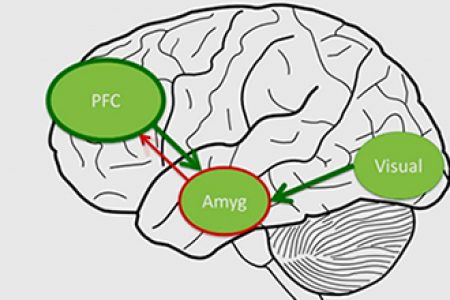Raise the age limits for junk food advertising
How come some people find it easy not to give that fast food joint a second glance, while others find their mouth watering as soon as they see it? And do children find it even harder to resist such temptations? Maybe the answers lie in our brain?
Food temptations
Every day we make about 200 decisions about food. These food choices determine what we eat, when we eat, and how much we eat. At the station, in town, at the office… adults and children are continuously bombarded with food stimuli, thanks to the abundance of restaurants, convenience stores, fast food chains, and coffee bars. Food is available all the time, everywhere, and in unlimited quantities. To withstand all these temptations, especially the unhealthy ones, we need self-control.
Food stimuli
Many factors are involved in determining how sensitive someone is to food stimuli. Hunger is one of them. We can also observe this sensitivity to food stimuli by measuring brain activity using functional MRI. In contrast to traditional MRI scans, which only show the size and position of the brain, an fMRI scan can show and measure the location and strength of brain activity.
Differences between adults and children
Children’s brains continue to develop right up to the age of 22 or beyond. Brain regions involved in the development of self-control, especially, seem to be among the last to ‘set’. And, as various studies have shown, this means that children’s brains respond to food stimuli differently than adults’ brains do. Children show less activation in areas that are needed for self-control, and more activation in areas involved in reward and motivation. Several studies have shown that adults who demonstrate this pattern of brain activation in response to food have a higher likelihood of weight gain and a lower likelihood of success in a weight loss programme. This suggests that children are more sensitive to food cues and are thus have a higher chance of making unhealthy food choices.
Regulation of marketing to children
Although children are possibly more sensitive to food cues, there are only a few government regulations to keep marketing for unhealthy food in check if it is specifically aimed at children. There are the various ‘pledges’, such as the EU-pledge in Europe and the Children’s Food & Beverage Advertising Initiative in North America, that the food industry itself has come up with to restrict food advertising targeting children under the age of 12. However, these voluntary initiatives have frequently been criticised for their low standards and commitment, as well as for their lack of transparency and the absence of enforcement mechanisms.
Random age limit
The pledges seem to work on the assumption that children over the age of 12 will be just as capable as adults of resisting the temptations of unhealthy food. But given that brain development is still in full swing until at least the early twenties, this is very much open to doubt. It is highly possible that children aged between 12 and 18 are even especially susceptible to unhealthy food. The peak in risky behaviour seen in adolescence is due in part to the fact that the brain regions involved in reward develop earlier than those involved in self-control. So precisely children over the age of 12 find it more difficult to resist temptations.
Raise the age limits in the regulations
One contribution to halting the increase of young people with overweight and obesity would be to introduce tighter controls on junk food advertising aimed at children over the age of 12. It is time for an evidence-based marketing policy to ensure that children are given the greatest possible opportunities to develop into healthy adults.





